Multibrowser Test allows you to verify the consistency, correctness and functionality of your web application across multiple web browsers and mobile devices, ensuring compatibility with a wide range of user environments.Let’s walkthrough how to do it
Summary
- aiTest Multibrowser Test allows you to verify the consistency and correctness of your web application across multiple web browsers and mobile devices, ensuring compatibility with a wide range of user environments.
What is Multi Browser Test?
- Multibrowser Test in aiTest refers to the process of testing a web application on different browser platforms such as Chrome, Firefox, and Edge, as well as on various mobile devices like iPhone, Samsung, iPad, etc.
- The aim is to ensure that the application behaves consistently and correctly across these environments.
Why to use Multi Browser Test?
Using Multibrowser Test in aiTest offers the following advantages:
Comprehensive Browser Coverage: Test your application on popular browsers and mobile devices to reach a broader audience.Browser Compatibility: Identify and resolve compatibility issues specific to different browsers and devices.User Environment Validation: Ensure your web application performs reliably across various user environments.
Benefits
The benefits of conducting Multibrowser Test in aiTest include:
Increased Test Coverage: Cover a wide range of browsers and devices to maximize the reach of your application.Efficient Bug Detection: Quickly detect and address browser-specific bugs, leading to faster releases.
How to Create Testrun in Multi Browser Test?
- Sign up using your E-mail or Google account.
- Go to
Multi-Browser Test
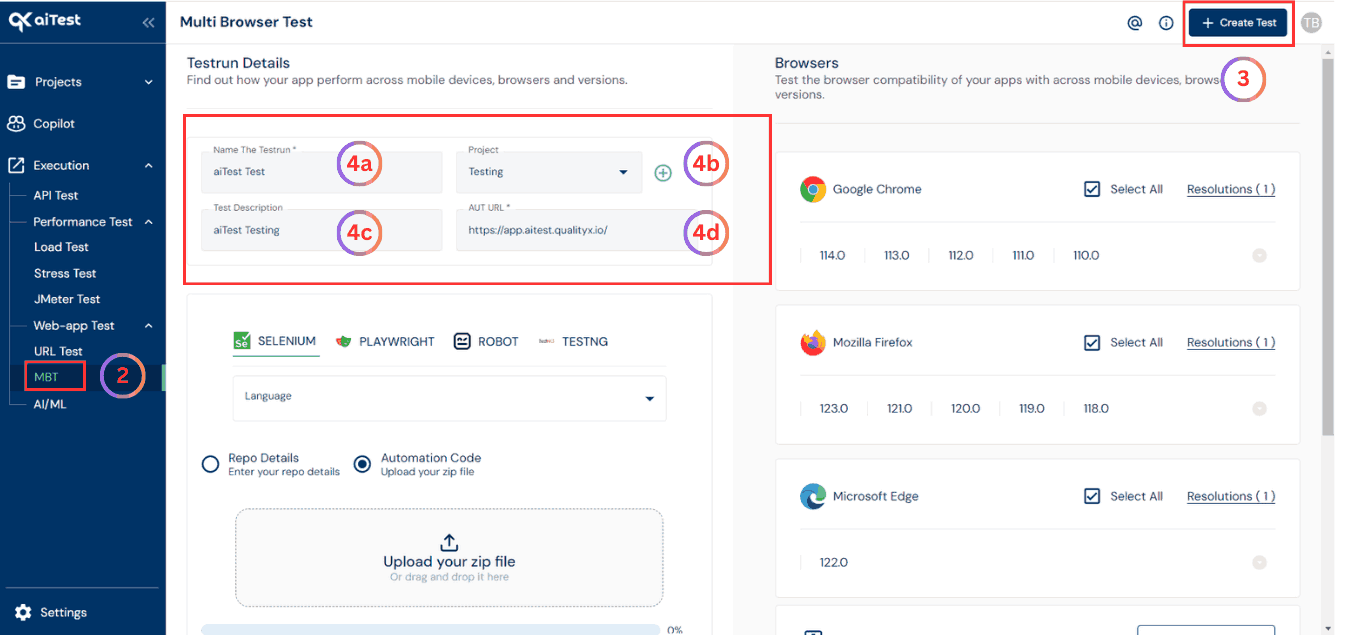
- Hit the Create Test button.
- Configure your test:
- a)Name the test: Give the name of testrun whatever you want or which is related to your application, So that it will be easy to get that particular testrun details whenever you want. i.e. test-example.com, test-demo.com, etc.
- b)Project: Select a project in which you want to run your test or you can create a project by clicking on the red colored plus sign(+) button.
- c)Test Description: Write some testrun description to make your testrun more informative.
- d)AUT URL: Application Under Test URL. e.g. https://example.com
- e) Select language from language option

- Now here you can choose Repo Details or Automation Code.
- a)Repo Details: Provide the Repo Details User’s Git Repository URL, User’s Git Username, User’s Git Token or Password,Branch Name, Report File Location and Testrun Command.

- b)Automation Code: If you select
Automation Code you will need to upload your zip file and enter Report File Location and Testrun Command.
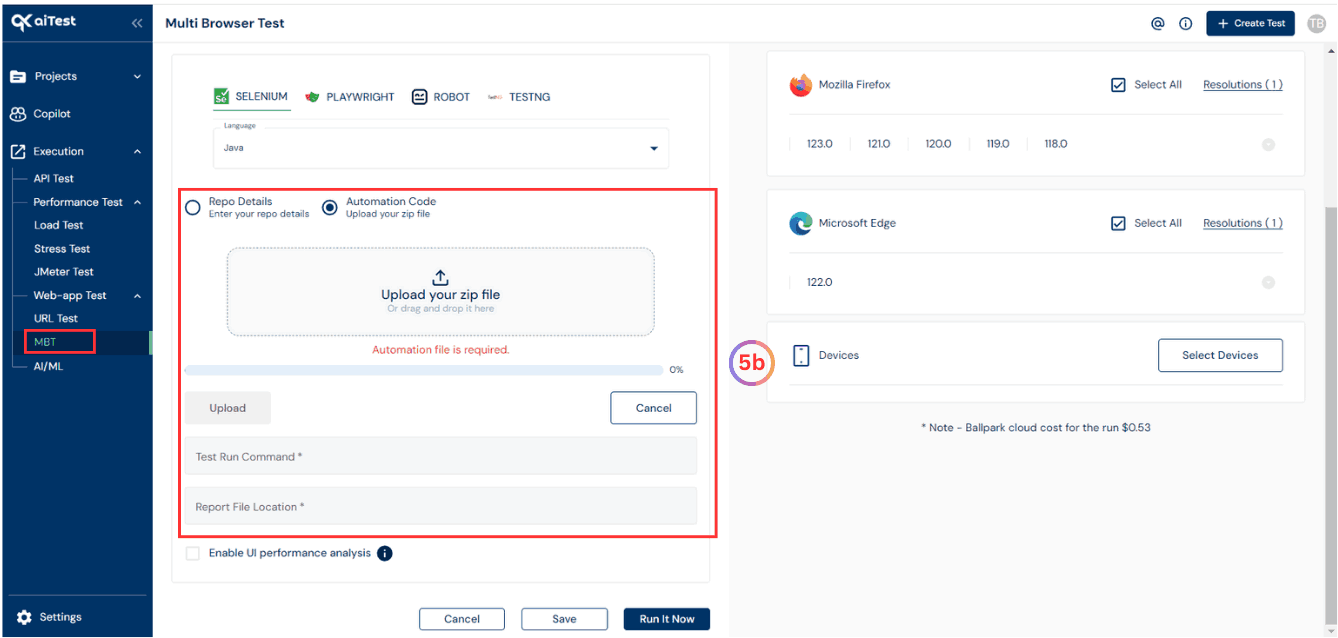
- c)Select Browsers: At the end select the browser on which you want to run your test. Currently, we have 3 browsers such as, Google Chrome, Mozilla Firefox and Microsoft Edge with their different browser versions, and 9 different mobile devices such as iPhone 12 Pro, iPhone X, Pixel 5, Samsung Galaxy S8+, Samsung Galaxy S20 Ultra, iPad, iPad Mini, iPad Air and iPad Pro.
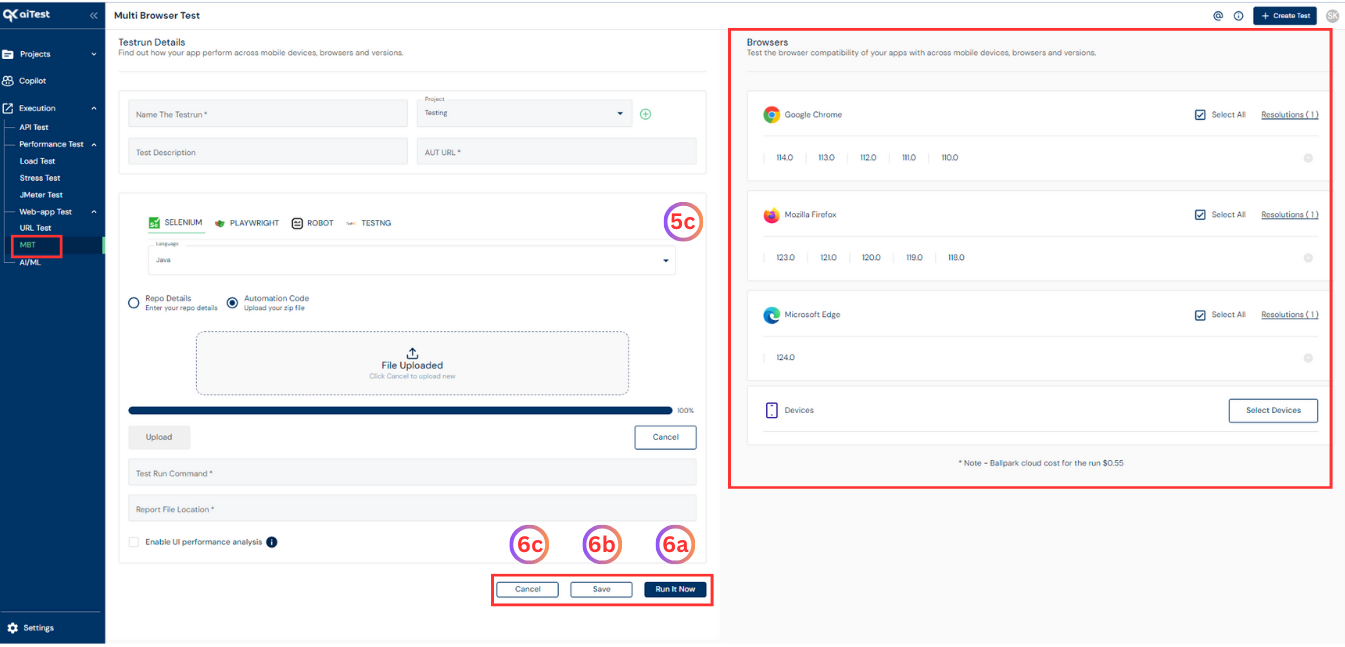
- Once you are done with the above steps you can do either of the following:
- a)Run It Now: Immediately run the automation code to test the browser compatibility of your apps with across mobile devices, browsers and versions.
- b)Save: Save the configuration for later run as draft testrun.
- c)Cancel: Reset and go back to dashboard page.
- d)Update: Update the configurations of the saved draft testrun.
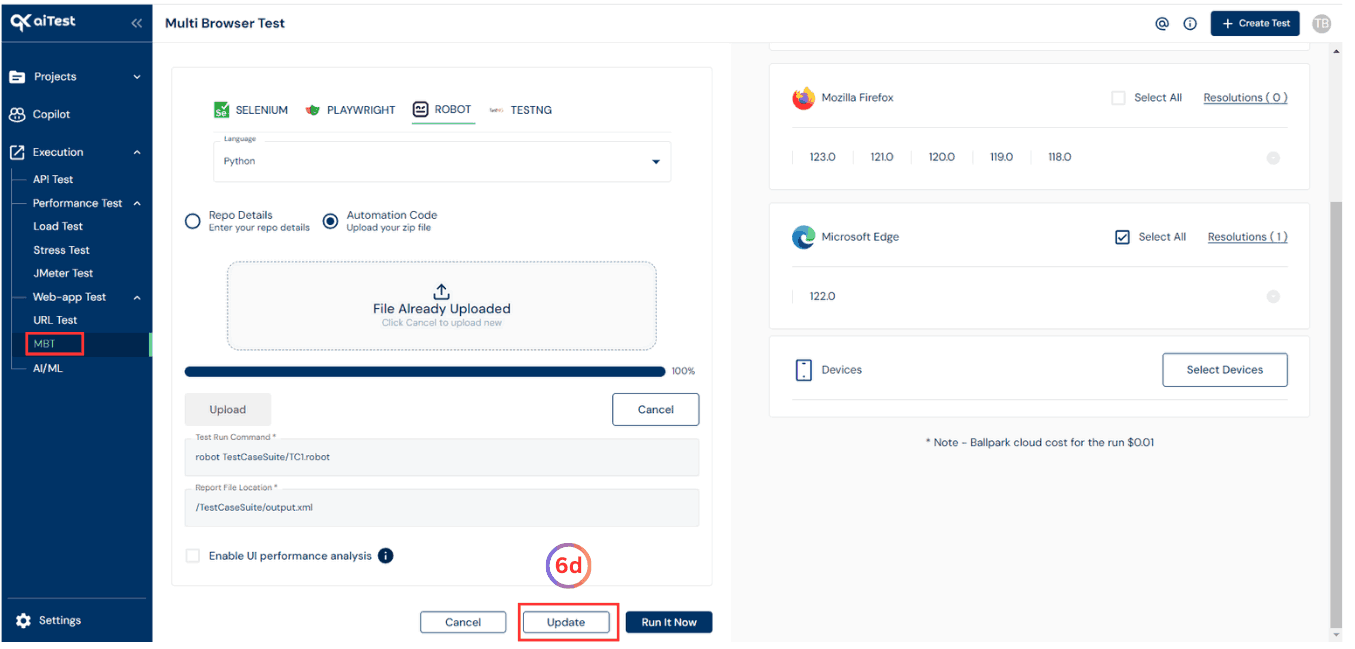
Run Analysis
After the testrun is completed, you can access the Run Analysis to review the results.
Here’s how:
- Go to the Multi Browser Test dashboard to see an overview of the testrun results.
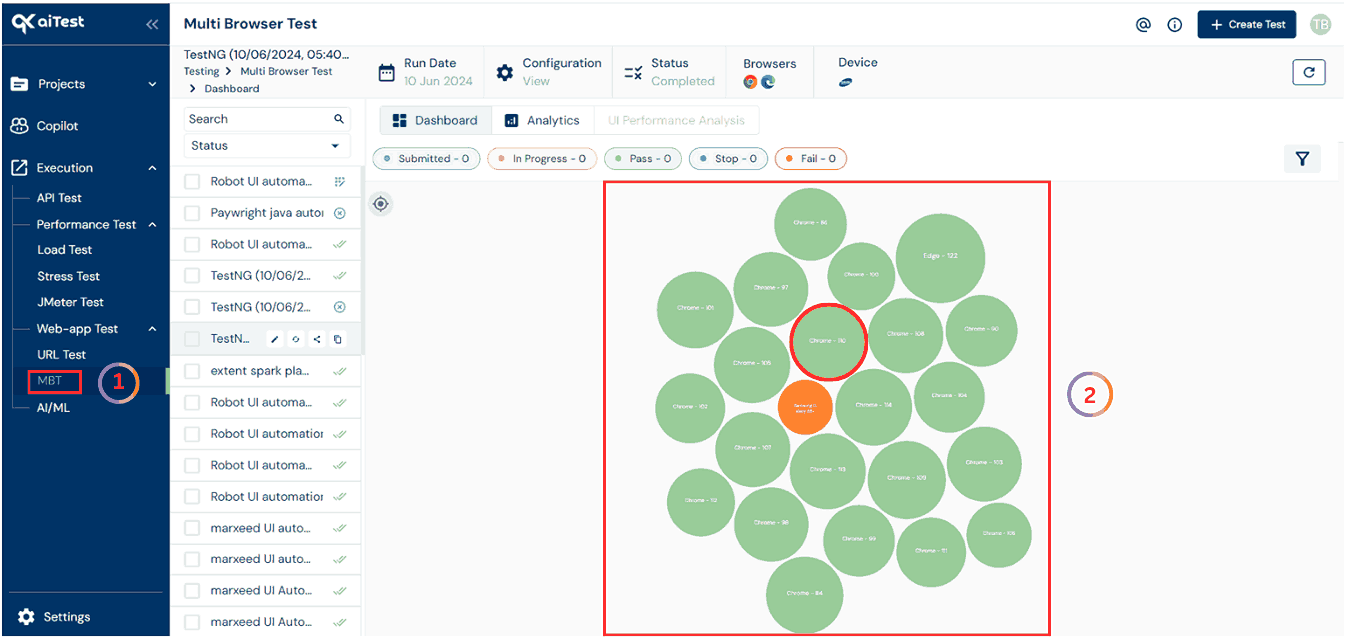
- Once you have reached the Multi Browser Test dashboard page of aiTest, For more detailed information, click on the
Bubble associated with the completed testrun. You’ll find options to view Automation Logs and Report Details.
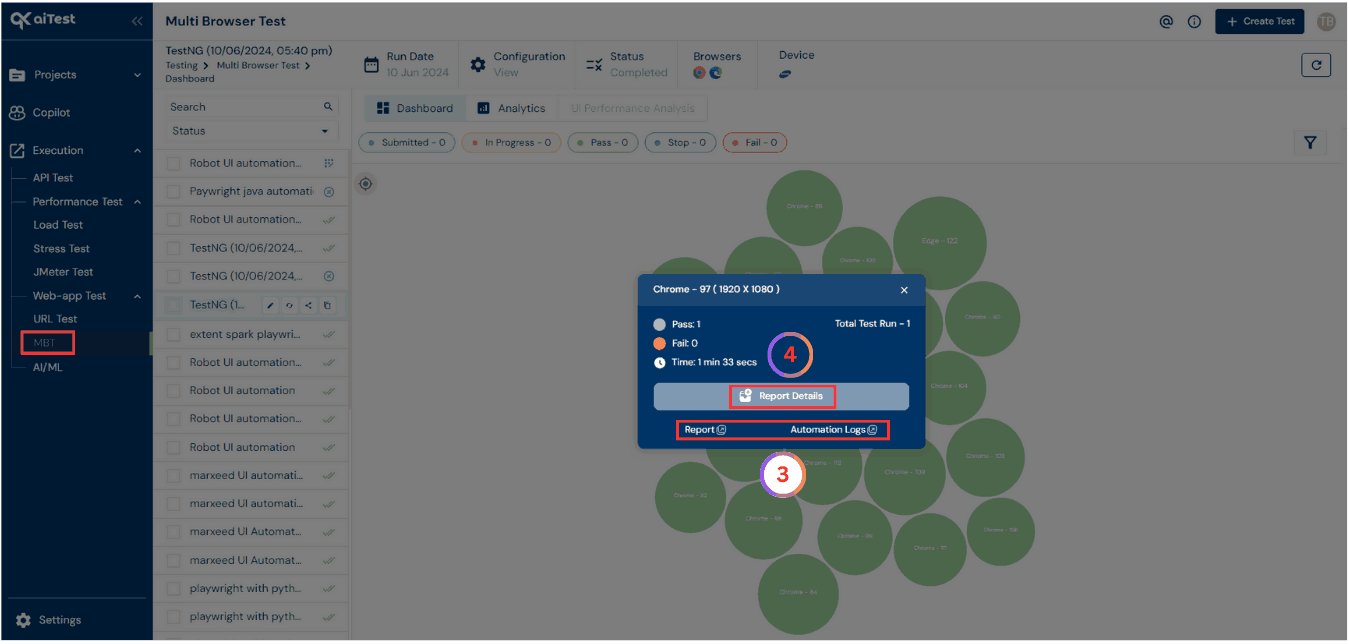
- Click on
Automation Logs to view detailed logs and any potential issues encountered during the test.
- To access the Test Report, click on the
Report Details button.
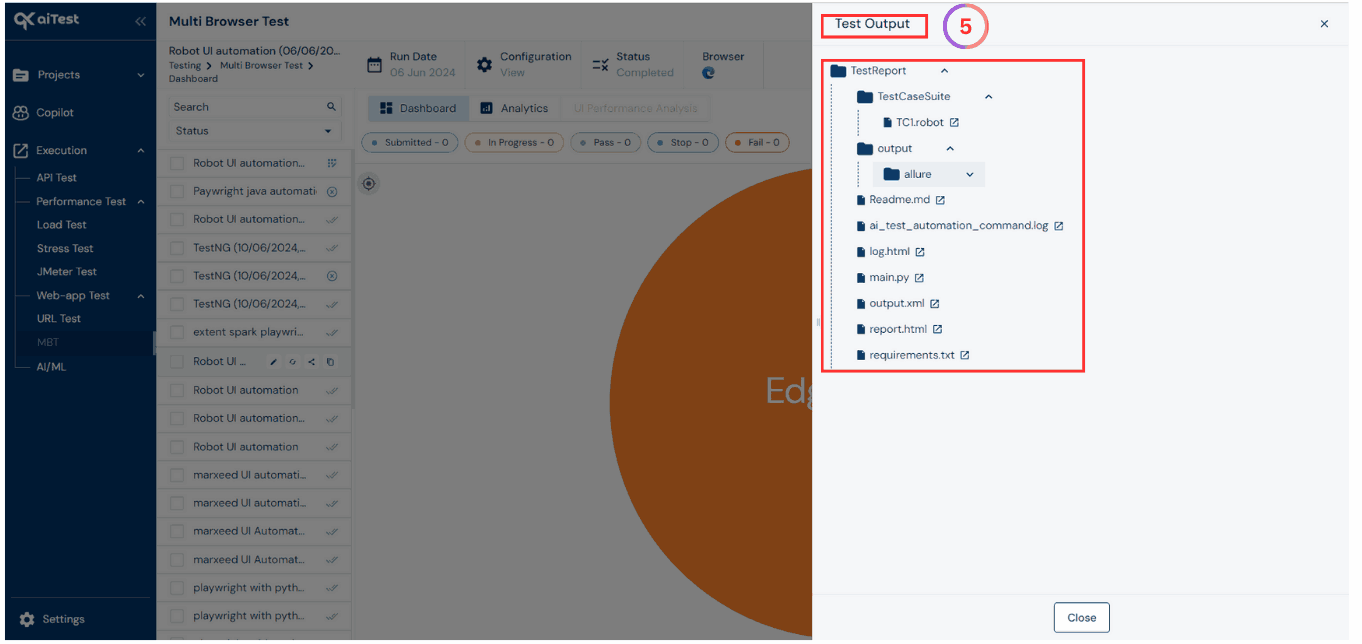
- Within the
Test Output, click on Test Report to find the .xml, .log,
.htmland .json report files.
- UI Performance Analysis these files contain comprehensive information about the test results, including the URLs tested, their status, and any errors encountered.
Questions answered
- What is Multi Browser Test?
- How to use aiTest for Multi Browser Testing?








